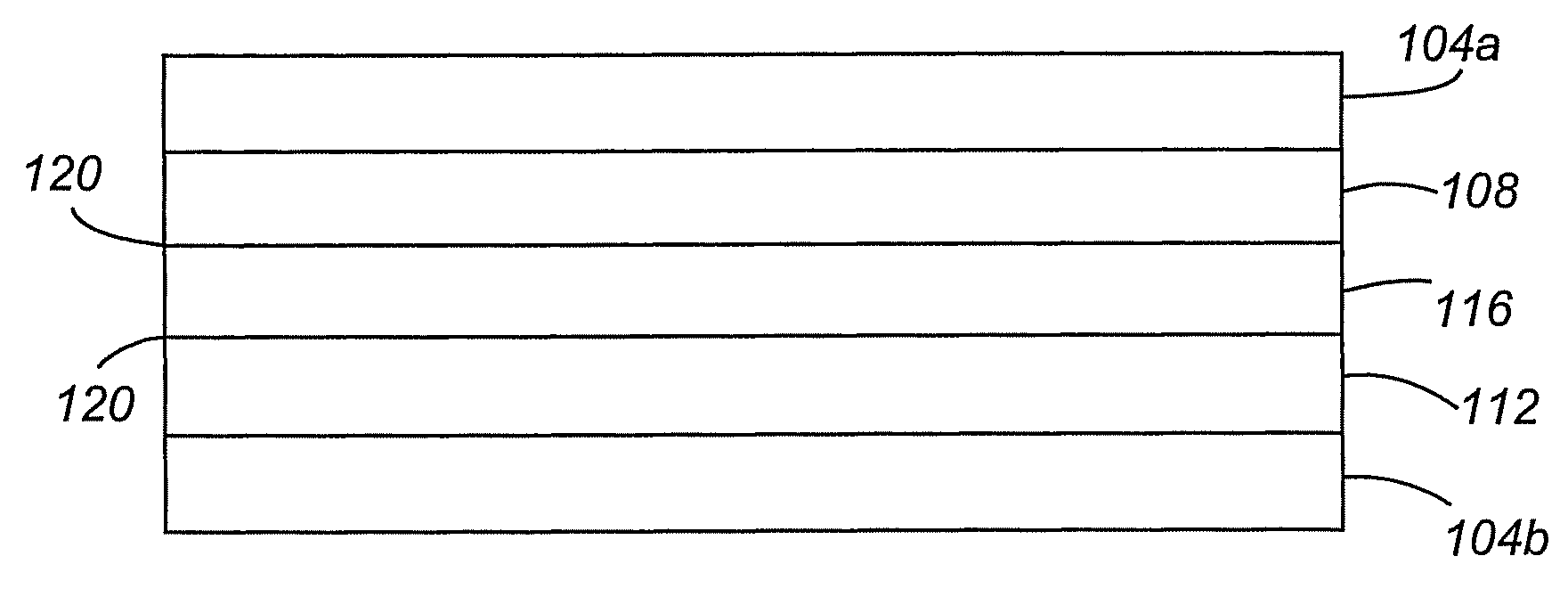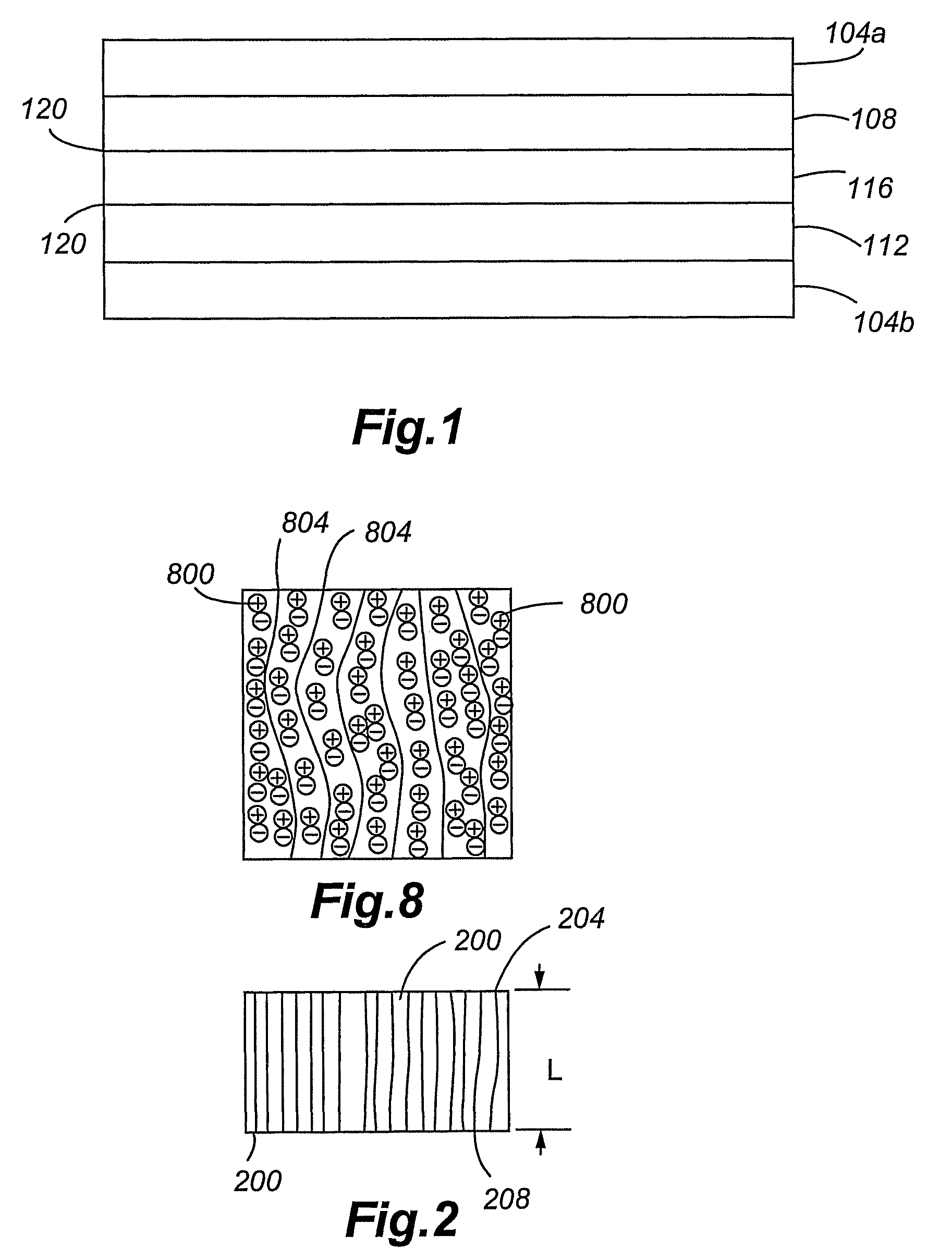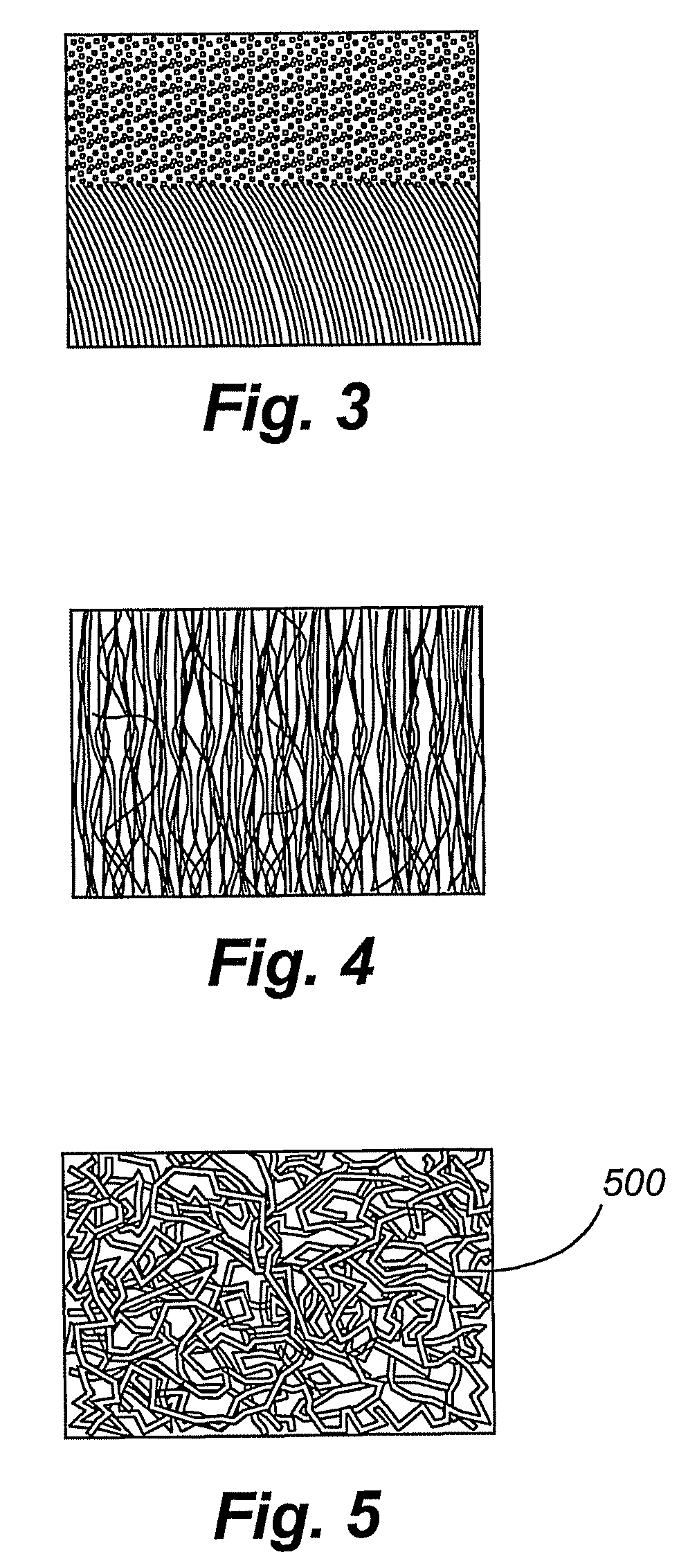High performance ultracapacitors with carbon nanomaterials and ionic liquids
a carbon nanomaterial and ultracapacitor technology, applied in the field of ultracapacitors, can solve the problems of limited performance (energy and power density), short cycle life of ultracapacitors, unsafe operation, etc., and achieve the effects of improving the charge transport capability, enhancing specific surface area, and improving capacitor performan
- Summary
- Abstract
- Description
- Claims
- Application Information
AI Technical Summary
Benefits of technology
Problems solved by technology
Method used
Image
Examples
Embodiment Construction
[0080]An electrochemical device according to a first embodiment of the present invention is shown in FIG. 1. The device is a Faradaic or non-Faradaic ultracapacitor 100 comprising first and second current collectors 104a,b, anode 108, cathode 112, and Ionic Liquid-incorporated Gel Polymer Electrolyte (ILGPE) 116 positioned between the anode 108 and cathode 112. As will be appreciated, the ultracapacitor can be of other designs, including, without limitation, stacked and spiral-wound configurations. Additionally, the anode and cathodes can act both as electrode and current collector, thus, eliminating the need for separate current collectors.
[0081]The first and second conductive collectors 104a,b are any highly conductive or superconductive material. Examples include conductive metals (e.g., copper, aluminum, nickel, and stainless steel), superconductive ceramics, and the like.
[0082]The anode 108 and cathode 112 electrodes can be any material having relatively high degrees of electro...
PUM
| Property | Measurement | Unit |
|---|---|---|
| diameters | aaaaa | aaaaa |
| diameters | aaaaa | aaaaa |
| lengths | aaaaa | aaaaa |
Abstract
Description
Claims
Application Information
 Login to View More
Login to View More - R&D
- Intellectual Property
- Life Sciences
- Materials
- Tech Scout
- Unparalleled Data Quality
- Higher Quality Content
- 60% Fewer Hallucinations
Browse by: Latest US Patents, China's latest patents, Technical Efficacy Thesaurus, Application Domain, Technology Topic, Popular Technical Reports.
© 2025 PatSnap. All rights reserved.Legal|Privacy policy|Modern Slavery Act Transparency Statement|Sitemap|About US| Contact US: help@patsnap.com



